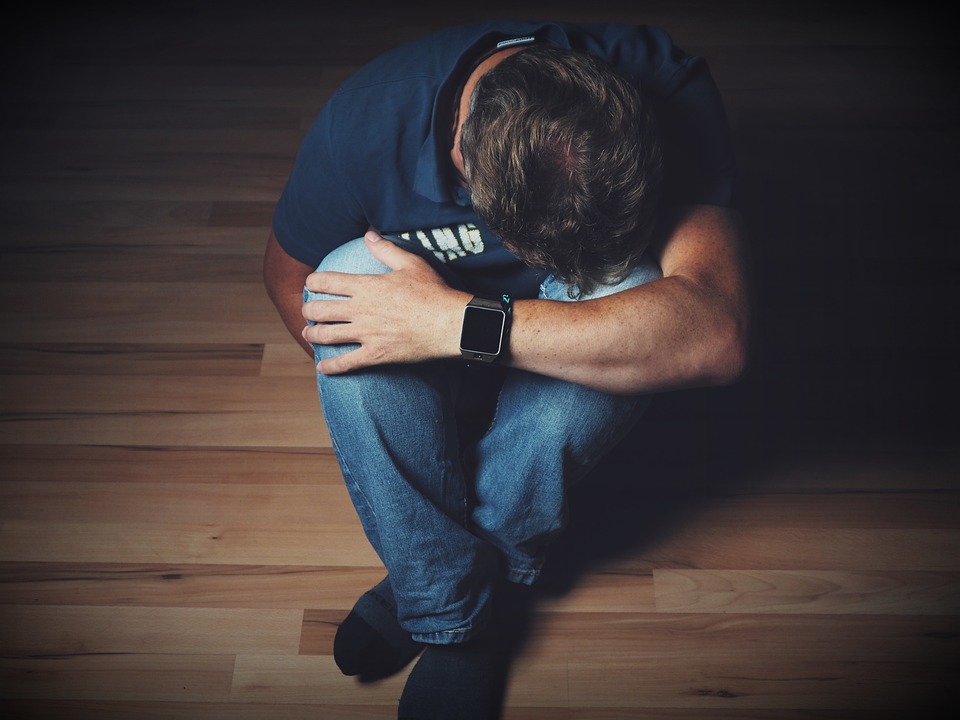September is Interstitial Cystitis (IC) Awareness Month. As we come to the end of this month, I want to recognize and bring attention to a urinary condition that countless Americans – plus some of my very own dear pals – have to deal with. Sadly, this issue cannot be as easily treated as something as minor as a cold, but certain natural treatments can be of assistance.
Interstitial Cystitis
Millions of Americans are adversely impacted by a long-term, unpleasant bladder disorder called Interstitial cystitis. Individuals with interstitial cystitis endure soreness and ache in the bladder and the area around it due to inflammation in the bladder lining. This guide for patients covers all aspects of Interstitial Cystitis–symptoms, diagnosis, treatment, and strategies for managing the disease on a daily basis.
Individuals of any age, origin and ethnicity can be impacted by interstitial cystitis, however more adults than children experience it. The National Institute of Diabetes and Digestive Kidney Diseases has stated that interstitial cystitis is more frequent in females than males.
The intensity of IC signs and symptoms can detrimentally affect one’s quality of living and interfere with daily routines. It’s necessary to consult with a doctor like a urologist or urogynecologist to verify any other conditions that might have similar signs and symptoms, such as bladder infections.
While there is no definite cure for Interstitial Cystitis, the suitable treatment can assist those with IC to regulate their signs and bolster the quality of life.
Symptoms
Symptoms of IC manifest differently from person to person. For instance, female patients may experience an increase in their symptoms beforehand in comparison to their periods. Stress may also make symptoms more severe.
Through the passage of time, the bladder can become marked with scarring or become rigid because of inflammation. The bladder has a hard time expanding, resulting in it being unable to store urine and even possibly causing bleeding of the bladder walls.
Generally, usual signs of a problem include bladder ache, uneasiness, or an urge to urinate. Signs of intense distress such as discomfort during sex, unable to exercise comfortably or reluctance to go out can disrupt day-to-day life.
IC may cause the following symptoms:
- Urinary urgency during the night and day
- Pain, pressure or tenderness in the pelvis, bladder and perineum that may increase when the bladder fills with urine
- The bladder doesn’t hold as much urine as it used to
- Painful sexual intercourse
- Pain in the penis or scrotum in men
- Pelvic floor muscle spasms in women
What Does IC Pain Feel Like?
The most typical symptom of IC is tenderness upon being put under pressure. Everyone’s IC pain can be experienced differently, but usually it becomes more intense as the bladder becomes fuller. It may be dull, stinging or burning.
Aside from irritation of the bladder, IC can cause suffering in the lower back, lower abdominal area, or pelvic region. Males may experience discomfort in the penis, scrotum, or testicles while females may sense pain in the vagina or vulva.
Complications
The symptoms of IC may result in further health problems and decrease the overall enjoyment of life. Complications are physical and emotional.
Individuals suffering from interstitial cystitis could have similar psychological issues such as feeling down, anxiousness and sleeping disorder that are common in other people with prolonged pain or illness.
IC complications include:
- Difficulties with sexual intercourse
- Intimacy avoidance
- Avoiding traveling or exercise
- Painful pelvic exams and Pap tests in women
- Bladder scarring and bleeding
- Reduced bladder capacity
- Sleep loss
- Anxiety
- Depression
Diagnosis
At this moment, no conclusive examination can demonstrate if a person has IC or not. Rather than relying on a laboratory diagnosis, medical professionals identify IC through details of the patient’s symptoms, a physical and neurological assessment, and certain bladder tests.
According to Dr. C, the most recurrent mistaken diagnosis is a urinary tract infection. Lowell Parsons, an educator and specialist in integrated circuits from the University of California, San Diego Medical Center.
Information a medical provider may use to diagnose IC includes:
Symptoms
- How severe symptoms are
- How long a person has had symptoms
- What is the patient’s family and medical history
- Medications a patient is taking, over-the-counter and prescription
- How much and what kind of liquids a person drinks
- How symptoms affect daily activities
Physical Exam
Medical providers will do a physical and neurological examination to identify other conditions and investigate what might be causing the symptoms.
For males, the test will incorporate an examination of the rectum, prostate, and stomach. For females, the assessment will involve inspecting the abdomen, rectum, and organs in the pelvic region.
Physicians may also assess a patient’s emotional wellbeing since some folks suffering from Interstitial Cystitis are also experiencing issues like tension and other mental illnesses in conjunction with signs associated with IC.
Other Tests
In addition to undergoing physical tests, patients will have to answer a survey regarding the degree of pain they feel. This is called a baseline pain value.
The provider may also perform a voiding test. This is an exam to see how often you go to the bathroom to urinate. Individuals who have Interstitial Cystitis have to go to the restroom more frequently and generally have less urine each time they empty their bladder.
Urodynamic Evaluation
This examination evaluates the amount of pressure in the bladder as it is being filled with liquid via a catheter. Folks with IC have limited tolerance for fluid intake, and they might experience pain as the bladder gradually fills up.
Cystoscopy
For this assessment, the medical practitioner will examine the bladder with a specialized tool. The doctor can look inside the bladder to check for cancer, stones, or sores. The individual will also be equipped to accomplish a bladder biopsy. It is probable that someone suffering from interstitial cystitis and bladder ulcers has interstitial cystitis.
Causes
No one knows exactly what causes IC. It is believed by researchers that individuals with interstitial cystitis have an impaired bladder wall. This causes substances from urine to seep into the inner wall of the bladder, leading to ache and distress.
The Interstitial Cystitis Association suggests that various elements may contribute to the emergence of the issue. These involve damage to the bladder or its lining.
Triggers for IC include:
- Pelvic floor problems
- Autoimmune disorders
- Trauma to the spinal cord
- Defective bladder lining
- Inflammation or hypersensitivity of the pelvic nerves
- Overdistension of the bladder, such as when people hold their urine for too long
- Trauma or injury to the bladder (from surgery or other injury)
Does a History of Abuse Cause IC?
There is disagreement as to whether there is a connection between IC and experiences of sexual and physical abuse. Research outcomes are varied, some demonstrating no links, while other studies indicate a substantial amount of mistreatment for those with IC. No agreement has been reached by the medical community at this point, as reported by the Interstitial Cystitis Association.
Treatment
Sadly, there is no remedy for Interstitial Cystitis and it will not resolve on its own. The effects of the condition may disappear for an extended period, but there is the possibility of recurrence of symptoms.
The optimal strategy for managing IC depends on the individual. Sometimes, it may take a bit of experimentation to determine the most effective remedy for IC symptoms. It is essential for individuals who are seeing a doctor to be forthcoming and truthful about anything they are feeling or what has been occurring.
Possible remedies for IC encompass making adjustments to one’s habits, taking medications, having therapy and undergoing surgery.
Lifestyle Changes
The initial approach to treating IC should include alterations in conduct, nourishment, and physical activity. These changes can lessen symptoms.
Manipulative pelvic floor therapy can bring about a reduction in certain types of discomfort and agony for certain patients. This training is distinct from Kegel exercises, which are not suggested for individuals with IC.
Although IC does not arise due to psychological or emotional strain, it can exacerbate signs and symptoms. Patients can receive therapy to develop methods for overcoming mental and emotional tension.
Foods that may exacerbate IC symptoms include:
- Tomatoes
- Chocolate
- Coffee
- Alcohol
- Caffeine
- Spicy food
- Carbonated drinks
- Citrus
Natural Remedies for Interstitial Cystitis
Heat/Cold Therapy
At times, the best way to get rid of the pain associated with an interstitial cystitis flare is to use either heat or cold therapy. Depending on what kind of flare-up it is, it could require heat, cold, or a mixture of the two.
The bladder wall and muscles respond positively when exposed to heat. The most straightforward way to relieve bladder spasms is to apply a heating pad or hot water bottle to the abdominal area. The warmth can assist in loosening the tense and cramped muscles and provide relief to the bladder lining.
It may be beneficial to use a longer-lasting heat pad with a cover on it, worn beneath pants or undergarments, when attempting to alleviate a pelvic floor flare.
Anesthetizing the area, particularly during a pelvic floor flare-up, is highly effective. Extreme pain of the urethra can be slightly alleviated with a cold water bottle that is covered with some sort of material wrap applied directly to the urethra. The cold helps to reduce inflammation.
It is essential to not keep either the heat or the cold on for too long; it is recommended to swap between them or remove them from the affected area every 20 minutes or so.
Pressure/Support Therapy
The Mama Strut appears to be a very beneficial invention for those with interstitial cystitis. This product wasn’t originally made for interstitial cystitis, but more for post-partum healing for women after childbirth. However, it has the capacity to be useful for a range of pain and healing issues, including interstitial cystitis.
The Mama Strut has different spaces where heat and cold packs can be put on your back, tummy, and perineum area, which is ideal for reducing irritation from IC flare pain! It may be a bit pricey, yet some ladies may think it compensates for the cash to be able to apply hot and cold packs to those areas where it’s required, and to be mobile instead of expecting them to rest during flare-ups accompanied with either cold or hot support.
The Mama Strut is not overly cumbersome, meaning you can slip it on under your clothing in a low-key manner. This video shows how it works.
Interstitial Cystitis Diet
Consuming pure cranberry juice is a widespread technique for fighting a urinary tract infection. This treatment can actually prove detrimental to IC sufferers. Cranberry juice is highly acidic and can irritate the bladder in some cases.
Common acidic substances that can cause bladder irritability include coffee, diet soda, any alcoholic drinks, cranberry or other acidic fruit juices, tomatoes, chocolate, and lemons. A lot of people can recognize which foods, if any, make their flares worsen, but they can figure it out by trying a removal diet.
For individuals troubled by IC, they may opt to take Prelief when they anticipate consuming a dish heavy in bladder irritants with an acidic nature.
Those afflicted with Interstitial Cystitis discover that an eating plan that reduces inflammation can be beneficial, since Interstitial Cystitis is an inflammatory issue. This diet usually involves no wheat or gluten, a limited amount of sugar, and no processed foods.
Marshmallow Root
Elmiron is a widely used medication for treating interstitial cystitis. It is speculated that it is used to cover the lining of the bladder and provide protection to individuals with Interstitial Cystitis.
Marshmallow root can replicate the effects of Elmiron, while not exhibiting any of the adverse reactions drugs may cause. Capsules of marshmallow root are available, or one can make a tea with the root.
Aloe Vera
Many obstetricians/gynecologists are now suggesting that their patients take aloe capsules to help prevent outbreaks of interstitial cystitis.
Clinical testing has indicated that the consumption of freeze-dried Aloe Vera Capsules can alleviate the symptoms of various bladder problems, particularly interstitial cystitis/painful bladder syndrome (IC/PBS), including a decrease in the frequency and intensity of pain, distress, and burning sensations.
It is speculated that the aloe plant may be advantageous to people struggling with IC in multiple ways. After undergoing the proper treatment, the powder continuously possesses a high concentration of glycosaminoglycans (GAGs). The first layer of the bladder that is ruined by Interstitial Cystitis is a type of glycosaminoglycan layer. It’s conceivable that aloe vera operates similarly to Elmiron, yet without the downsides of a synthetic medication. The aloe plant has the potential to be an extremely potent anti-inflammatory, antibiotic, analgesic, and anti-microbial agent, particularly when processed into concentrated form.
People with Interstitial Cystitis should be careful when drinking aloe vera juice. Sometimes citric acid is used to conserve it, yet this might be irritating to the bladder.
Regulating Hormones
A lot of women with interstitial cystitis suffer more pain when their hormone levels change. Some females perceive that the severity of their IC increases shortly prior to ovulation and then calms down after it has occurred. Some women find that the period of time between ovulation and the commencement of their period is the most unpleasant.
Pregnancy may lessen the discomfort from IC in some cases up until the last three months. It is not rare for women to experience a dramatic increase in symptoms during the postpartum period due to their changing hormones.
Attempting to level out hormones can improve the indications of IC, Furthermore, essential oils can be used to control hormones as well as provide relief from pain and spasms.
Creams featuring natural progesterone, such as Progest, may be useful in correcting hormone unwinding.
Water Intake
Due to IC, it can be difficult to know how much water to drink. It is essential to consume 6-8 glasses of water daily to remain hydrated, which helps to prevent constipation and maintains the pH of urine. There is an issue that many people with interstitial cystitis are concerned about how often they have to go to the bathroom, and that drinking too much liquid may result in more frequent urination that can bring on more discomfort.
Determining the optimal amount of water to consume can require a delicate balance. Drinking water regularly throughout the day is the best way to stay adequately hydrated while also not needing to go to the bathroom too often.
During an exacerbation of symptoms, some people with interstitial cystitis choose to drink alkaline water in order to keep their urine from becoming too acidic. A technique for reducing the acidity level in urine is to consume a mixture of ½-1 teaspoon of baking soda blended into a full glass of water.
Reducing Stress
Tension can cause an increase in inflammation in the body and IC is a sickness characterized by inflammation. Discovering methods to unwind and alleviate pressure can help lower inflammation.
Taking some time out for relaxation and contemplation can help. Lay in a reversed position on the ground with your feet up on a seat or footstool for 10-15 minutes every day while rehearsing unwinding procedures to help your pelvis floor muscles loosen up.
Soaking in an Epsom salt bath can lead to loosening up of both the pelvic floor muscles and the bladder muscle, making it easier to relax. A sitz bath with baking soda added is an effective way to assuage urinary discomfort and assist in easing tense muscles.



